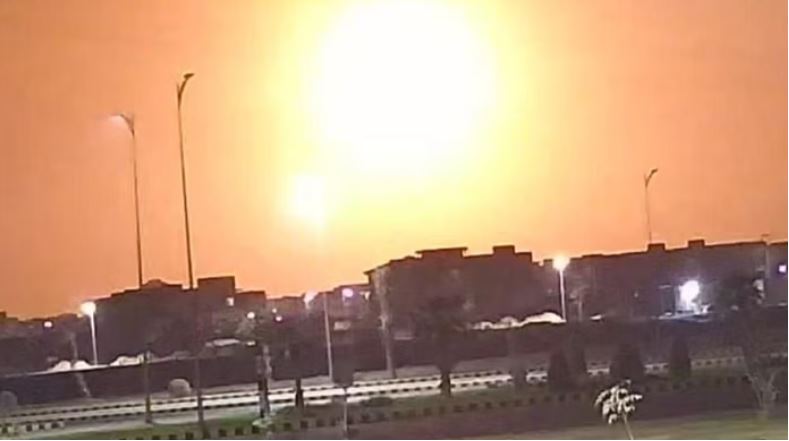Goa is abuzz with excitement as vintage bike and car owners, users, collectors and fans are decking […]

OPERATION SINDOOR AIMED AT HANDS THAT WIELD THE GUN, NOT BRAINS THAT CONTROL THE HAND!By Rajesh Rajagopalan
In the News, May 10- May 16, 2025 May 9, 2025Deterrence itself does not appear to have been the objective of these strikes. If it was, then the focus had to be on the Pakistan military, specifically the Pakistan Army.
It’s unclear what India’s ‘Operation Sindoor’ is designed to achieve, but deterrence is not it. A quarter century after Pakistan began high-profile terror attacks with the strike on India’s Parliament in New Delhi, India has yet to learn how to respond to the country’s terrorist strategy. There is little likelihood that this attack will achieve anything more than previous Indian ones, such as at Balakot. And this means that Operation Sindoor will not stop further Pakistan Army-sponsored terror strikes on India.
Operation Sindoor includes many more terror targets than Balakot, but that is of little consolation. What matters is not how many targets are struck but what the intended effect is and who the target of the signalling effort is.
Terror infrastructure is fairly limited and easily reestablished, even assuming that there was any significant damage. The level of damage itself will become an issue of debate, to the detriment of the more important question of whether any deterrent effect was achieved.
Deterrence not the goal
Deterrence itself does not appear to have been the objective of these strikes. If it was, then the focus had to be on the Pakistan military, specifically the Pakistan Army. If it was indeed designed to be the target, then the claims about not attacking the Pakistan military and aiming only for terrorists make no sense. In Balakot, India claimed that the attack was a preemptive strike against an imminent terror attack. Now, India is explicitly stating that it is not targeting the Pakistan military. Beyond such justifications, what these strikes demonstrate is that India does not want escalation.
This is the problem. Deterrence is based on the threat of definite and further escalation. If India doesn’t want further escalation, that is a clear signalling that deterrence of the Pakistan Army is not the objective. If so, this is just plain retaliation; Pakistan can continue with further attacks and ignore these pinprick counterattacks.
Moreover, this justification makes it seem that the terrorists are somehow autonomous actors rather than the agents of the Pakistan Army and the Pakistan state. Surely, that cannot be the Indian case. These strikes are only aimed at the hands that wield the gun, not the brains that control the hand.
The other indication that India doesn’t think of these strikes as motivated by deterrence is this: despite decades of such terrorist attacks, Indian decision makers have not prepared military forces to respond with attacks designed to be punishing enough for effecting deterrence. If it takes two weeks to launch less than a dozen missile attacks, it speaks poorly to India’s preparedness to respond to terror strikes.
Preparation is crucial
Deterring Pakistan requires preparing and undertaking costly operations, such as a ground attack. That will no doubt be expensive for India but it will be ruinous for the Pakistan Army. But this requires years of planning and preparation, not a few high-level meetings for photo ops after an attack has already taken place.
It is the fact that India will be prepared to pay such costs to impose an even higher cost on Pakistan that will lend credence to any deterrence strategy. It is the preparation to undergo pain that indicates seriousness and determination. India is signalling by its lack of preparation and by its fear of escalation that deterrence is not its objective. In contrast, look at the years of preparation that China is undertaking for conquering Taiwan – preparations so extensive that now Beijing may quite likely be able to take over the country without an actual war.
The move to curtail the Indus water treaty may have some effect, but that will take a long time before it begins to bite. Again, the lack of seriousness is in clear evidence because no preparation was made beforehand. India could have prepared for stopping the waters for many years, so that even the threat of treaty abrogation became a serious one.
Moreover, India now runs the risk of China retaliating, too. After all, this does give China the justification for damming the Brahmaputra.
As usual, diplomacy will only have limited impact. Expecting that other countries will either approve India’s retaliatory attacks or that they will be able to rein in Pakistan is naive. Harsh rhetoric on the floor of the United Nations may play well with the peanut gallery back home, but it will not affect Pakistan.
Of course, in strategic terms, Pakistan doesn’t get much out of these terror attacks either. It doesn’t resolve the Kashmir dispute nor even move the needle in a direction that Pakistan will consider as positive. It doesn’t reduce India’s slow but steady economic growth, or the growing power disparity between the two. If anything, the Kashmir and terror obsession has hurt Pakistan much more than India in myriad ways – including its international reputation, and the significant domestic social, political and economic costs of this strategy. Pakistan’s slow decline has much to do with these choices, but the Pakistan Army insists that its institutional interests are more important than the national interest and conflates the two.
Nevertheless, Pakistan will continue such attacks because the direct costs in terms of Indian response and retaliation are quite limited. Rawalpindi will not be limited by any calculus in which the Indian response will be a factor. As long as India is more afraid of escalation, which it has signalled clearly, it can forget about deterring Pakistan-sponsored terror attacks. Indeed, soon enough, even these retaliatory attacks may become a problem because China’s response will also become a factor.
Rajesh Rajagopalan is a professor of International Politics at Jawaharlal Nehru University (JNU), New Delhi. He tweets @RRajagopalanJNU. Views are personal.
(Edited by Zoya Bhatti)
Courtesy: The Print















